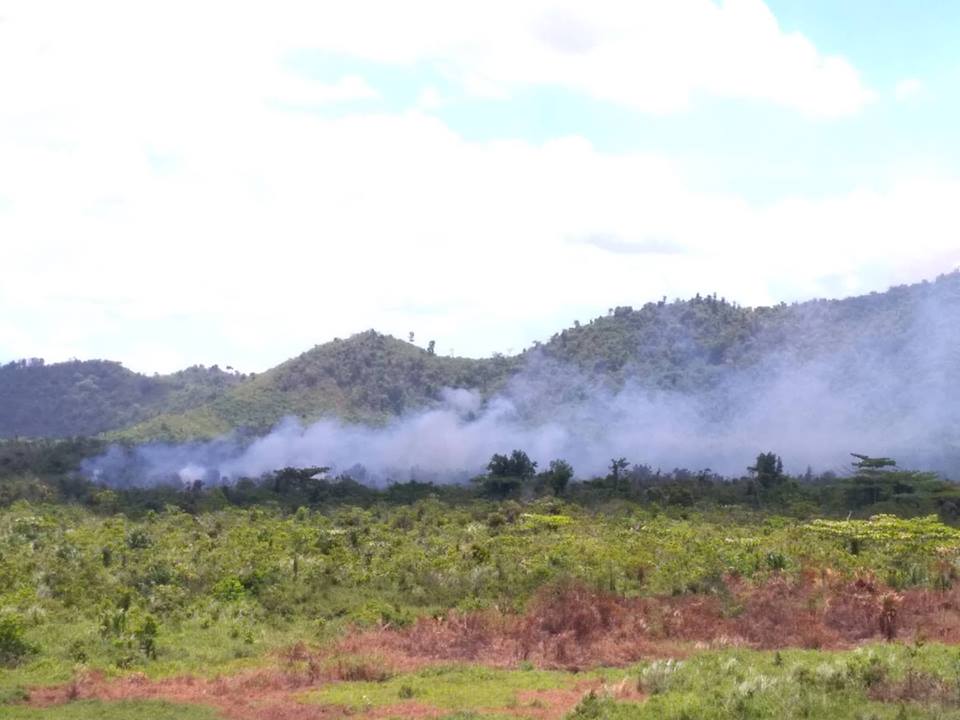
The Leyte peatland (PNA photo)
Poor conservation of more than 3,000-hectare Leyte Sab-a Peatland Forest piqued the attention of a concerned group after the forest experienced forest fire, wildlife poaching, and conversion of its portions into agricultural lands.
Juvilyn Salazar, Forest Foundation project coordinator for the Leyte Sab-a Peatland Forest Restoration Initiative, said communities and local authorities are not aware of the worth of peatland to alleviate the impacts of climate change.
“When a peatland expert from Indonesia visited Leyte Sab-a Basin, they considered the area as heavily degraded due to draining. For a peatland to store carbon, it should be wet all the time. Since it is dry, it emits carbon than accumulate it,” Salazar said.
Peatland fires over the years were the result of consistent draining of water since the 1970s. The most recent was last April and it lasted for weeks.
The Leyte Sab-a Peatland Forest in the towns of Alangalang, Sta. Fe and San Miguel is one of the two major peatlands in the country and plays an important role in lessening climate change in a long term basis, since one of its function is to moderate atmospheric carbon dioxide concentrations.
“The forest has carbon storage. It plays an important role to counter global warming and climate change, promote diverse vegetation, and ensure stable water supply,” Salazar further detailed.
Hunting of wildlife in the area such as Philippine tarsiers, bats, migratory birds, and wild pigs have been prevalent. Residents have been poisoning threatened freshwater fishes that prosper in the area. One possible reason of this destructive action is lack of awareness or the absence of local policies that protect peatlands.
Around 1,160 hectares of the peatland have been recognized as alienable and disposable land where 660 hectares of the said land was distributed to farmers in compliance with the Comprehensive Agrarian Reform Program. Salazar also added that about 15 percent of the area has been nurtured.
“Local stakeholders are not aware that soil and water from peatland are not suitable for agriculture since it is acidic. They lack essential elements for crops to grow well,” Salazar said.
Since January 2018, the International Institute of Rural Reconstruction and Forest Foundation have been instigating the four-year Leyte Sab-a Peatland Forest Restoration Initiative.
The project, which costs about Php20 million, plans to craft legal and scientific studies, come up with a comprehensive map of the forest, and raise community and local leaders’ awareness on the importance of peatland forest.
Leyte’s Sab-a Basin displays diverse vegetation stamped by the presence of wetland forest, boggy areas, sedge and grasslands and diversity of endemic flora and fauna, with the presence of threatened animals and freshwater fish species which are found mostly in the wetland forest ecotype.
According to Forest Foundation, during rainy season, the basin absorbs and holds water, and releases it slowly to maintain base flows in the outflow rivers.
The Leyte Sab-a Basin peatland is a huge catchment basin with a total area of 3,088 hectares, more than half of which has been cultivated for agriculture.
Small remnant areas of swamp forest and grass peat swamp consist the remaining 1,740 hectares in the eastern half of the basin. (RJ Espartinez)